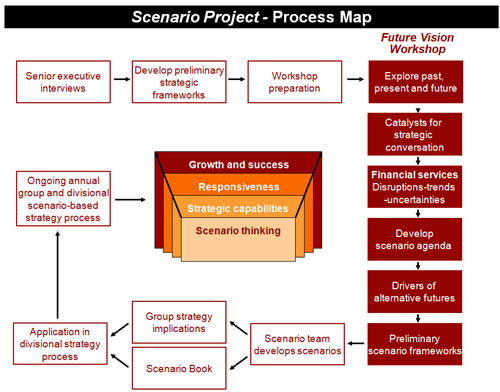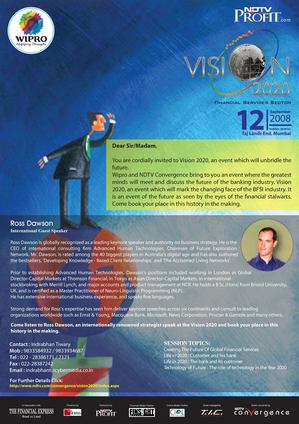Scenario planning: strategy for the future of global financial services
For my keynote at the Vision 2020 Financial Services conference last month in Mumbai I prepared some ‘quick and dirty’ scenarios for the global financial services industry landscape in 2020 from a technology perspective. Below is an overview of the content I used in my presentation. The complete slide deck from my keynote is also available, though it needs the explanation as below.
WARNING: These are scenarios prepared for a presentation, so they are far from rigorous or comprehensive. True scenarios should have fully developed storylines that evoke the richness of how the scenario unfolds and could actually happen. To be truly valuable, scenarios need to be created for a specific organization or strategic decisions – generic scenarios are of limited value. Always work with someone highly experienced in the field – most consultants that claim to do scenario planning are making it up. The Driving Forces and Critical Uncertainties identified below are highly summarized, and would be presented and aggregated very differently in a real scenario project. OK warning over, on with the content…
Scenario planning
Scenario planning recognizes that beyond a certain degree of uncertainty forecasting is of limited value (or can even be detrimental to good decisions). The process of creating a set of relevant, plausible, and complementary scenarios (more than the scenarios themselves) can be invaluable in creating and implementing effective, responsive strategies.
The heart of the scenario planning process is distinguishing between Driving Forces (consistent long-term trends) and Critical Uncertainties (unpredictable elements). Once these are identified, they are brought together to create a set of scenarios that reflect both what you know and what you don’t know about how the environment will change.
The image below shows a sanitized version of the process for a scenario planning project I ran for a major financial institution. This was quite a streamlined process relative to a comprehensive scenario planning project, however was designed to bring the insights directly into the existing group and divisional strategy process.

Below are the scenarios in detail:
- Driving Forces: Global Financial Services
- Critical Uncertainties: Global Financial Services
- Scenario Framework for Global Financial Services
- Four Scenarios for Global Financial Services
DRIVING FORCES: GLOBAL FINANCIAL SERVICES
1. Economic shift

Economic power is shifting to the major developing countries. The BRIC countries (Brazil, Russia, India, China) together host close to half the world’s population, and their pace of economic development means that before long there will be multiple economic superpowers. In addition, global economic growth is shifting to the virtual, and developing countries will gradually wean themselves from primary and secondary industries to be significantly based on knowledge-based services.

